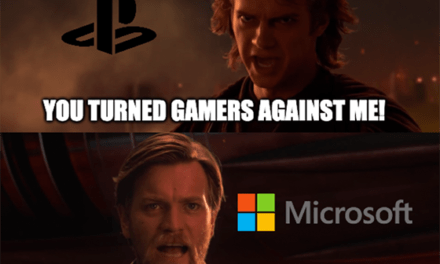
Workers Get Paid, Wall Street’s Afraid
I just got paid today, got me a pocket full of change.
Said: “Goldman, Goldman, do you got some wool?”
Yes, I do, man … and now our profits ain’t full.
There’s a sea change coming, Great Ones, and Goldman Sachs (NYSE: GS) just let the cat outta the bag on the new earnings season catchphrase.
Y’all remember the old excuse for missing revenue and earnings? The dreaded “supply chain issues?”
Well, we’ve got a new one this earnings season, and it’s called “higher labor costs.” And y’all need to get used to it real quick.
For instance, Goldman Sachs said this morning that fourth-quarter revenue rose 8% to $12.64 billion, beating Wall Street’s expectations by nearly $600 million.
Given that trading slowed down in the fourth quarter due to growing uncertainty and inflation fears, Goldman’s revenue beat is rather impressive.
Despite the decline in trading revenue, Goldman made up the difference with big gains in investment banking and wealth management — both are expected to grow amid Wall Street’s uncertainty.
However, earnings came in at only $10.81 per share, whiffing the consensus estimate for $11.76 per share. Oof.
So, where did the banking giant run afoul? Operating costs.
Goldman said that operating expenses surged 23% to $7.27 billion during the quarter, blowing past expectations for $6.77 billion. According to the investment bank, “significantly higher” employee pay and benefits were the biggest driver, in addition to higher technology costs and $182 million set aside for legal and regulatory costs.
It’s a weird position for Goldman Sachs to be in. On one hand, the bank should benefit from rising interest rates, which should greatly benefit revenue for both the investment banking and wealth management divisions.
On the other, a slowdown in the trading markets and soaring employment costs are eating into those interest rate projections.
Octavio Marenzi, CEO of bank consultancy Opimas, summed the situation up nicely:
Goldman’s earnings miss on rising employee compensation isn’t the last time you’re going to hear this narrative, Great Ones. It’s about to be as common as “supply chain issues” when it comes to earnings misses … and it will likely extend into the first half of 2022.
What does this mean for investors like you?
Well, it means soaring stock market volatility.

GS stock plummeted more than 8% following its earnings miss, which is probably an overreaction by Wall Street. But when the entire stock market has rallied like there’s no tomorrow for so long, this type of nervousness is par for the course.
And we’re going to see even more volatility as the stock market finally starts adjusting to the new normal in the economy … and the labor market.
Luckily for you, I just happen to know a guy who can help you navigate this rising market volatility … and he does it with just one trade per week.
My good friend Mike Carr — one of the True Options Masters — created a volatility strategy that revolves around one single trade. A strategy that targets big gains while stripping down options trading to its bare essentials.
Mike doesn’t like sugarcoating things. He’d much rather get right to the point.
He says with this simplified trading method, the focus is on the same trade … on the same ticker symbol … every week.
And with this method, he not only helps remove the stress of what and when to trade, but he has also shown his readers’ chances to get up to 100% gains — and sometimes more — in a matter of days!
That’s it. One trade to rule them all. One trade to find them. One trade to bring them all, and in volatility bind them!
Get your volatility-beating one trade now! Click here to find out more!
Good: What’s In Your Online Wallet?

We all know that credit card company Visa (NYSE: V) prides itself on being “everywhere you want to be.” But, it almost wasn’t…
Just before the Black Friday holiday shopping season, Amazon.com (Nasdaq: AMZN) announced that U.K. shoppers wouldn’t be able to use their Visa cards after January 19. According to Amazon, Visa’s processing fees in the U.K. were “an obstacle” in the company’s quest to provide the best prices for Amazon customers.
Today, however, Amazon backed away from the Visa U.K. ban. “The expected change regarding the use of Visa credit cards on Amazon.co.uk will no longer take place on January 19,” Amazon said in an announcement.
The battle over Visa processing fees isn’t over, not by a long shot. But, for now at least, Visa U.K. shoppers can still use their cards on Amazon.co.uk.
The really interesting part of all this is that U.K. credit card processors are no longer limited by old European Union rules on credit card processing fees because of Brexit. Visa competitor Mastercard (NYSE: MA) has already raised fees in the U.K.
And if you’re wondering why Amazon isn’t having the same dispute with Mastercard … well, that’s because Mastercard is Amazon’s credit card partner.
Back before Brexit, EU regulators would’ve probably taken a closer look at this situation, but the U.K.’s Payment Systems Regulator, while concerned about the situation, is waiting to see how things shake out.
“We will focus more on improving competition between payment systems, not just competition within payment systems,” said Payment Systems Regulator Managing Director Chris Hemsley said.
AMZN stock fell about 2% following today’s news, while V stock rose about 1%.
Better: …And Make It Double

All you needle phobes out there, it’s time to rejoice!
Woohoo! Oh, wait, I thought you said “nematodes.”
Moderna (Nasdaq: MRNA) plans to launch a combination COVID/flu vaccine by fall 2023. And if that’s not enough great stuff in one vial, the Moderna wombo combo will also target respiratory syncytial virus (RSV) … as long as clinical testing proves successful, that is.
Moderna’s flu vaccine is Phase 2 testing and should reach Phase 3 next quarter, while the RSV vaccine is already in Phase 3.
Moderna’s goal is “a single annual booster” to reduce the sheer number of injections one must undergo. It’s like a Flintstones’ multivitamin, but for … umm … infectious illnesses? (Call me when you have cartoon-character shaped chewable vaccines, Moderna … preferably in fruity flavors.)
Now, 2023 is practically forever away in pandemic time, so MRNA investors weren’t over the moon with the news, sending the stock down 7% today.
But if COVID becomes like another flu, then I can see a combined shot taking off.
A one-and-done shot could be efficient on Moderna’s production side, and if you’re one of those unlucky ducks who faints at the sight of a needle, well … now you’ll only have to faint once.
Editor’s Note: “Bio-Chip” Sparks Potential 199,900% Surge by 2025
It has no transistors. No wires. And it needs no electricity. Yet this new silicon micro-chip is about to drive mankind into a new era…
One small company has a patent on this new “bio-chip” — and you can take up an early position in their stock if you act right now.
Click here for the full details.
Best: Microsoft Clears The Dungeon

We’ve talked about some heft techy buyouts in these here digital pages — Nvidia’s ARM-and-a-leg acquisition, Oracle’s medical device dabbling with Cerner — but nobody does tech buyouts with the fanfare and oomph quite like ol’ Softy.
If Microsoft (Nasdaq: MSFT) had a “no more retail therapy” resolution for the new year, it’s donezo. The company just announced it’s buying acclaimed gamemaker Activision Blizzard (Nasdaq: ATVI) for $68.7 billion — all cash. Hey, big spender!
The deal is Microsoft’s biggest buyout … like, ever … and the news immediately sent ATVI shares soaring 32%. With yet another AAA game studio in its wheelhouse, Microsoft now owns huge franchise IPs, such as Call of Duty, Diablo, World of Warcraft and (unfortunately) Candy Crush.
The slew of popular games will flesh out Microsoft’s Game Pass stable (ew, flesh stables) of subscription games. And Microsoft hopes that Activision Blizzard’s nearly 400 million monthly active players will also subscribe to Game Pass.
Are … are you telling me games don’t come on cartridges anymore?
Heck no, gramps. Microsoft isn’t just sipping on the recurring subscription revenue tea with Game Pass … it’s creating it. While expected revenues from these franchises already make Microsoft the third-biggest game company — catching up to Sony and China’s Tencent — that’s only the tip of the metaverse iceberg here.
Microsoft notes that gaming is key to its metaverse-making dreams … or if you prefer the more esoteric marketing jargon, Microsoft envisions “intersecting global communities rooted in strong franchises.”
So … guilds? Is Microsoft’s big idea for the metaverse just one big raiding party? Come to think of it, World of Warcraft was a metaverse before we even called it “the metaverse” … which makes the Blizzard buyout a no-brainer.
We’re not quite out of the digital ether just yet, Great Ones — not if Walmart (NYSE: WMT) has anything to say about it.
And aside from its wishy-washy “we’re learning stuff!” statement up above … Walmart itself hasn’t actually “said” a whole lot. But that didn’t stop the metaverse’s rumor mill from roaring to life this morning.
Turns out, Wally World filed a number of trademarks last month that shows Walmart is undeniably slipping, slipping, slipping into the metaverse future.
According to the U.S. Patent and Trademark Office — a much more reputable source than some random folks who are “familiar with the matter” — Walmart’s filings indicate it wants to make and sell virtual goods, such as electronics and toys.
It gets better (or worse, depending on your personal tech aversion). Walmart also said it will offer users a virtual cryptocurrency and, you guessed it, NFTs. Because … why not?

I know Walmart has been lured in by Adidas and UnderArmour dropping their own NFTs to sell-out success, but those are brands that people, you know … want. I don’t think the same sneakerheads buying up Nike’s NFTs are the same target market for “Great Value NFTs,” but that’s just me.
Now, the real meat of Walmart’s metaverse matters won’t be with NFTs — I can tell you that up front. If anything noteworthy (or newsworthy) is coming out of Walmart’s digital forays, it’ll concern crypto.
Just think: Why did Amazon back off of its Visa ban? To be generous to U.K. shoppers? No! It’s so the truckloads of cash don’t stop comin’. Any self-respecting retailer should want to expand its payment options for customers.
And I have a hunch that this is where Walmart’s crypto projects are headed.
Will you be able to pay for stuff at Walmart with crypto? Will Walmart start up its own cryptocurrency to rival all other retailers’ coins?
Ooh, ooh, what if you could pay on Walmart.com … with WalmartCoin? Now that would be meta. Just as long as Walmart doesn’t go offering WalmartCoin to its employees as scrip…
What do you think Walmart plans to do with crypto and NFTs? Do you believe Moderna’s combo shot will actually make it to market? And will “higher labor costs” be Wall Street’s new go-to excuse this earnings season?
Drop us a line at GreatStuffToday@BanyanHill.com with your thoughts. Your email might even be featured in this week’s edition of Reader Feedback!
We’d love to hear from you! In the meantime, here’s where else you can find some Greatness:
- Get Stuff: Subscribe to Great Stuff right here!
- Our Socials: Facebook, Twitter and Instagram.
- Where We Live: GreatStuffToday.com.
- Our Inbox: GreatStuffToday@BanyanHill.com.
Until next time, stay Great!
Regards,
Joseph Hargett
Editor, Great Stuff






